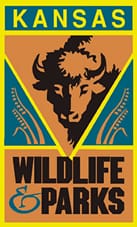Migratory Bird Hunters Get Your “HIP”
Harvest information stamp still required for late waterfowl seasons.

PRATT, KS —-(AmmoLand.com)- The hunting seasons may be winding down, but many waterfowl hunters are still enjoying late-season hunting. The Kansas Department of Wildlife and Parks (KDWP) reminds hunters who did not purchase a Harvest Information Program (HIP) stamp during the fall of 2009 that certification is still required for all migratory bird hunting. Any hunter who is required to have a hunting license must also purchase a HIP stamp to hunt ducks, geese, mergansers, coots, doves, rails, woodcock, snipe, and sandhill cranes. HIP is an annual program in which hunters provide information that helps biologists manage North America’s migratory game bird populations.
HIP is based on a voluntary survey of selected migratory bird hunters in the United States. When HIP stamps are purchased, state wildlife agencies collect information from hunters, and the U.S. Fish and Wildlife Service (USFWS) randomly selects a sample of those hunters and asks them to provide information on the kind and number of migratory birds they harvest during the hunting season. Those hunters’ reports are then used to develop reliable estimates of the total harvest of all migratory birds throughout the country. In this way, hunters serve as biologists’ eyes and ears in the field, helping to improve wildlife conservation efforts and protect the hunting heritage.
To comply with HIP, hunters must identify themselves as migratory bird hunters and provide name, address, and date of birth when they purchase licenses — something most hunters do already. They must do this in every state in which they hunt migratory birds. Hunters are also asked to voluntarily answer several questions about their hunting experience during the previous year’s season. Answers to these questions are not used to compile harvest estimates but help the USFWS select hunters to survey.
Kansas relies on hunting license vendors to collect this information when selling HIP stamps. Therefore, migratory bird hunters need to make sure that their vendors get them signed up for HIP when they purchase their licenses. When a hunter is properly signed up, KDWP provides proof of participation. Hunters must carry proof of their participation in HIP wherever they hunt migratory birds. Hunters who hunt migratory birds without proof of participation in the HIP program can be ticketed or fined.
A Kansas HIP stamp costs $2.50, to cover administrative costs. USFWS receives no income from this program. USFWS uses names and addresses provided by hunters for survey purposes only, and all contact information is destroyed immediately after processing each year.
A 2010 Kansas hunting license, in addition to state and federal waterfowl stamps and the HIP stamp, is required to hunt waterfowl in the remaining seasons this winter. Waterfowl and HIP stamps purchased for these seasons expire June 30, 2010. Remaining seasons include the following:
Ducks
- High Plains Zone (west of U.S. 283) — Jan. 23-31; and
- Late Zone — Jan. 23-31, 2010.
Geese
- Canada geese — Nov. 11-Feb. 14 (daily bag three);
- White-fronted geese — Feb. 6-14 (daily bag two);
- Light geese —Nov. 11-Feb. 14 (daily bag 20);
- Light Goose Conservation Order — Feb. 15-April 30 (no bag or possession limits).
Shooting hours for all species are one-half hour before sunrise to sunset. For complete hunting regulation information, consult the 2009 Kansas Hunting and Furharvesting Regulations Summary, available wherever licenses are sold or online at www.kdwp.state.ks.us.
